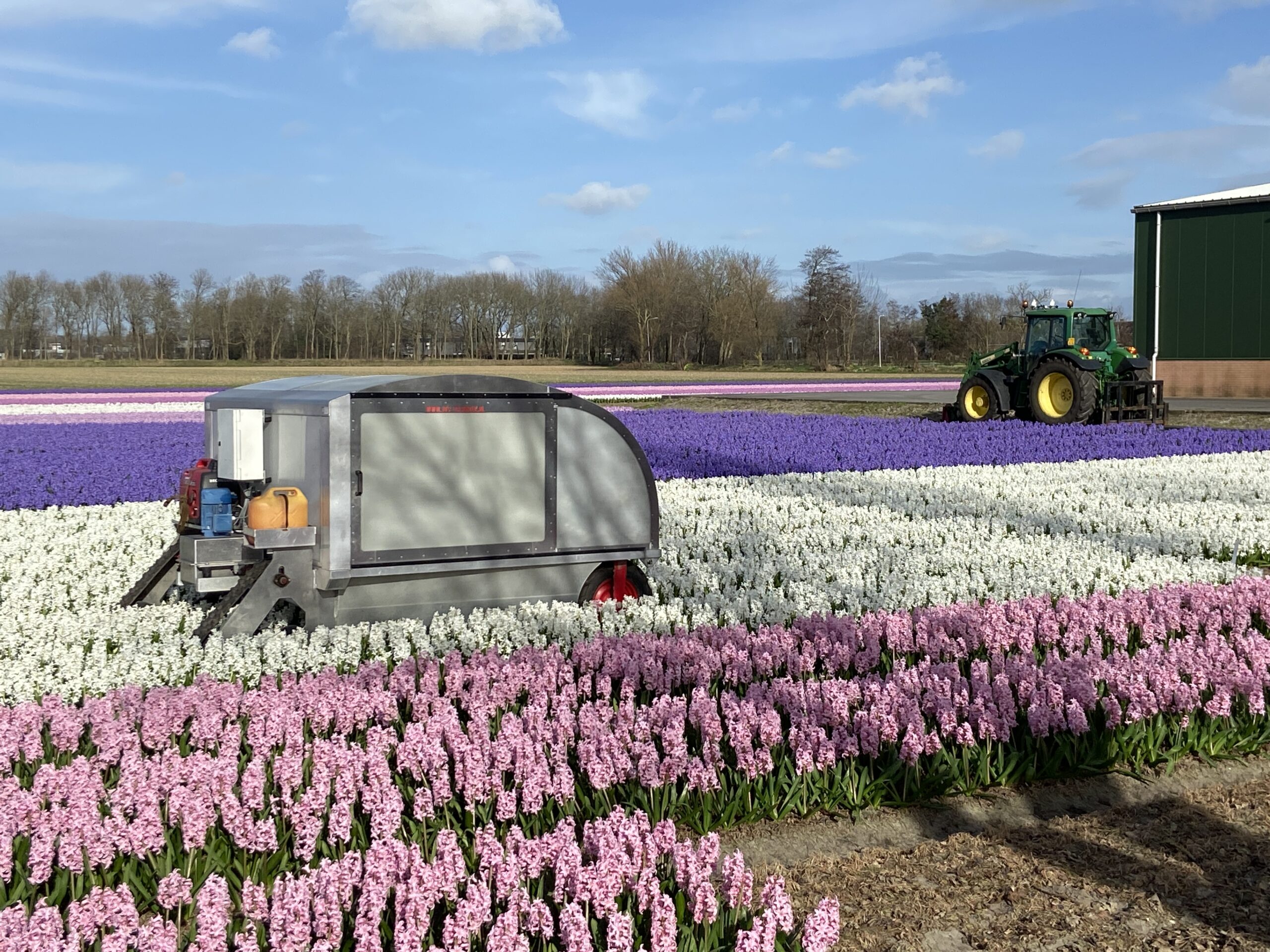Robots take to the Dutch bulb fields to spot diseased plants
Brandon Hartley
The visitors who flock to the hyacinth and tulip fields of the Netherlands every spring may encounter a new type of farmer this year.
Tulpenselectierobots [literally “tulip selection robots”] have become an increasingly common site in the country’s bulb fields. Their job is to spot sick plants and terminate them before they infect their neighbours.
A field full of weak (or dead) tulips is a major potential setback for farmers in an industry that remains one of the biggest in the country.
“The flower branch is always innovating and using new techniques to solve problems,” Michael Mackaay, director of the tulip bulb growers association KAVB told Dutch News. “One of the problems is the use of chemicals and pesticides. The robots offer an opportunity to help reduce this.”
The Selector 180, a tulpenselectierobot designed by the Delft-based H2L Robotics, uses AI technology to identify and pinpoint ill tulips with precise GPS coordinates. It’s the world’s first autonomous tulip selection robot.
The Selector 180’s programming helps it search through photos to look for telltale signs of sick tulips, which are usually identifiable by red stripes on their leaves. But the technology isn’t quite perfect.
“The robots can take thousands of pictures,” Mackaay said. “They have to determine whether or not a flower is ill, but their database is still growing as they learn to better recognise them.”
H2L Robotics was founded in 2019 and began testing a prototype in fields the following spring. The Selector 180 moves at a kilometre an hour, costs about €185,000 and handles one of the most tedious and back-breaking tasks of tulip farmers 24 hours a day.
The WAM Pennings farm in Noordwijkerhout has one tulpenselectierobot that they have been using for several seasons.
“The robot runs every night and that is necessary,” Allan Visser, the farm’s operations manager, told Dutch News. “That’s the great thing about a robot, it can also work at night. In addition, it is a significant investment that should pay for itself with as many operating hours as possible.”
The machines could one day put many seasonal labourers out of work which may be no bad thing, given few are willing to take on the task of spotting sick tulips. The work is slow and physically demanding and many human tulip spotters are also nearing retirement.
Take over
But it could be several more years before the tulpenselectierobots are capable of completely taking over from their living and breathing counterparts.
“It depends on what purpose they’re used for, but for some purposes they’re equal to or a little bit better than humans,” Mackaay said. “The robots are still learning, though. It’s a very new technique.”
Visser noted that while their robot is definitely getting better at its job, it can only do so much. “He works satisfactorily,” Visser said. “Every year he gets a little better. I think the robot currently does about 25% of the work at the nursery.”
Thank you for donating to DutchNews.nl.
We could not provide the Dutch News service, and keep it free of charge, without the generous support of our readers. Your donations allow us to report on issues you tell us matter, and provide you with a summary of the most important Dutch news each day.
Make a donation